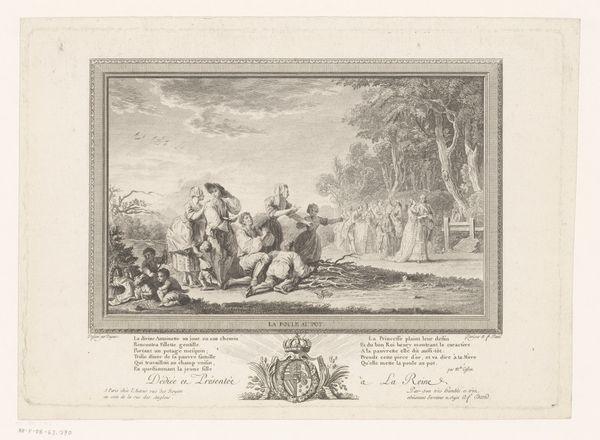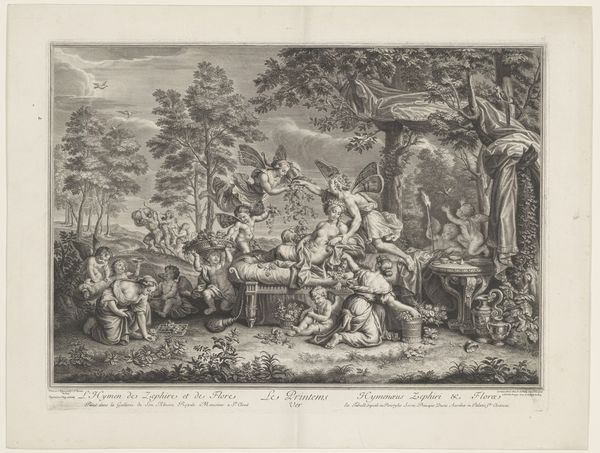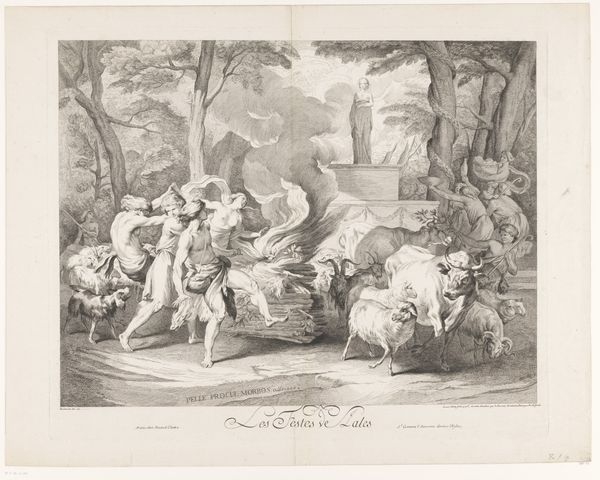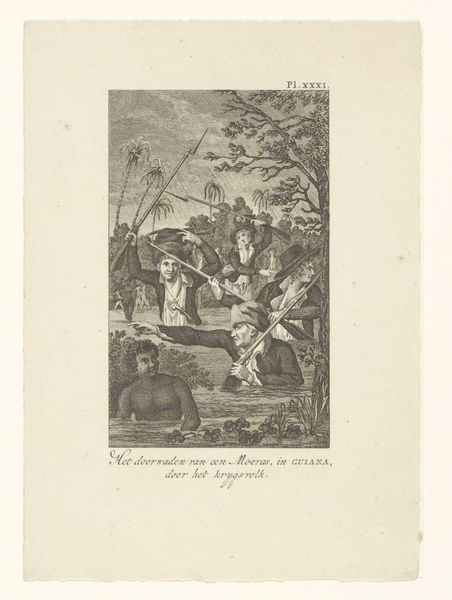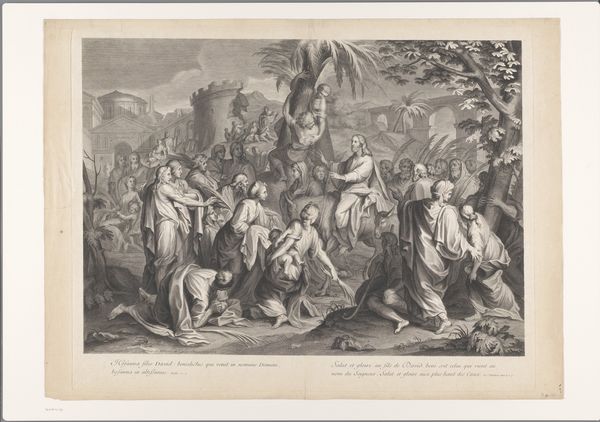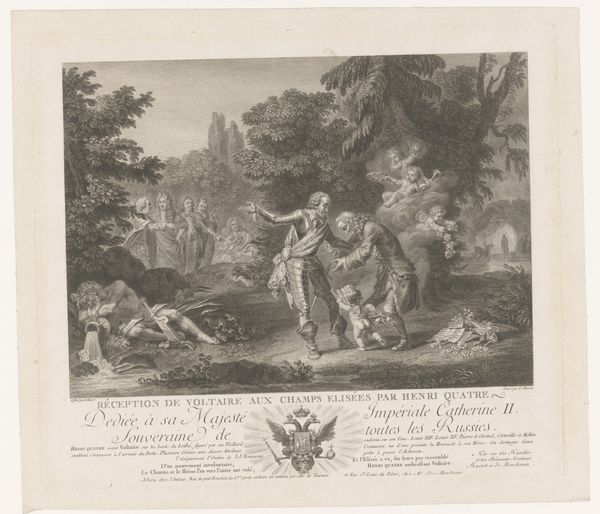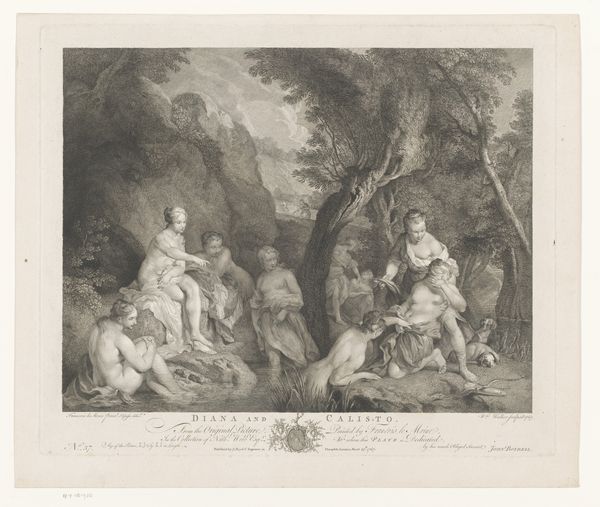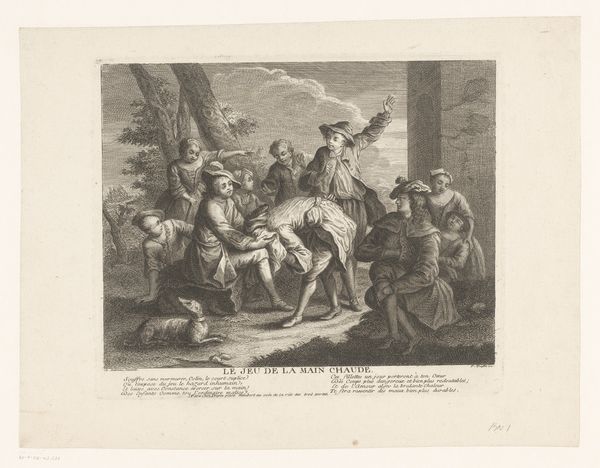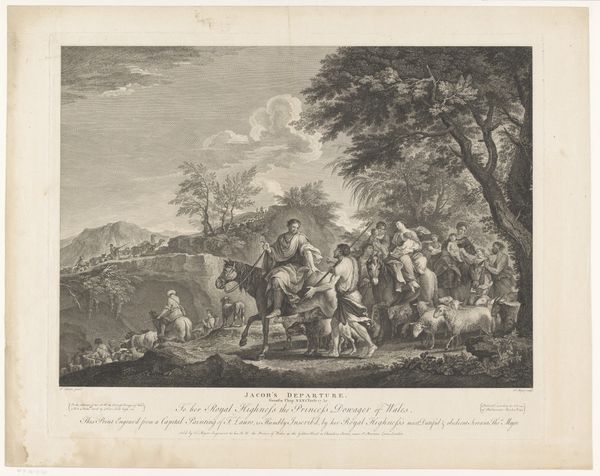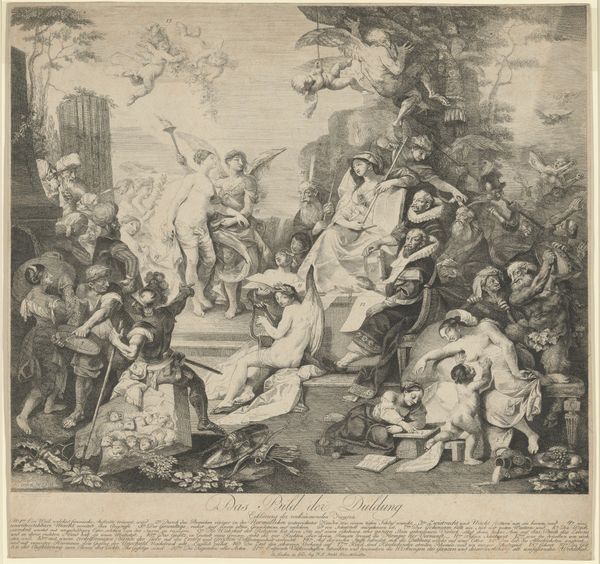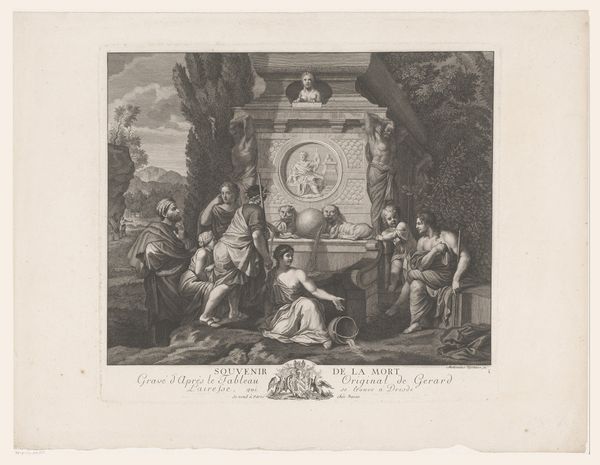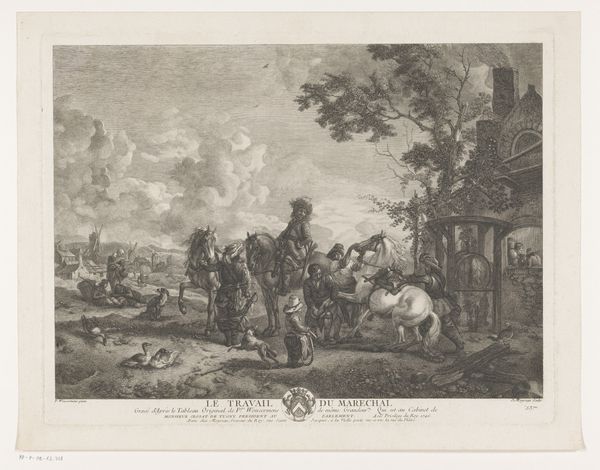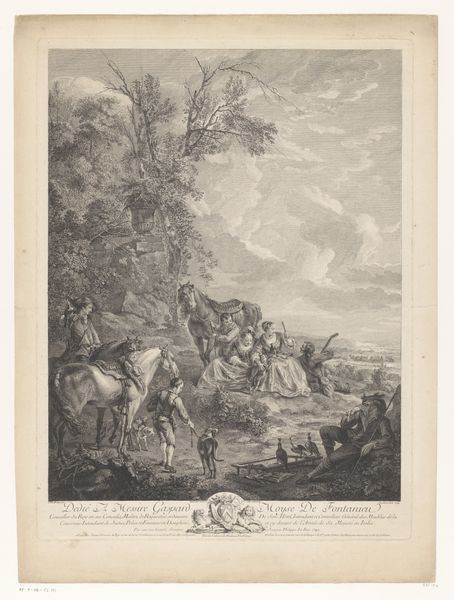
Dimensions: height 428 mm, width 531 mm
Copyright: Rijks Museum: Open Domain
Curator: Looking at Richard Earlom’s engraving, "Jacob Buries Laban’s Images" from 1766, I’m struck by the density of line work. Editor: Yes, there’s almost a feverish quality to the marks, creating a dreamlike tableau. I wonder about the context – it seems laden with a story? Curator: Absolutely. The scene illustrates a biblical narrative. Jacob, escaping his father-in-law Laban, is depicted here burying the idols Laban worshipped. It’s a powerful statement of rejecting old beliefs in favor of a new spiritual path. But consider Earlom’s process; reproducing a painting through engraving means translation. Editor: And the hierarchies inherent there: Painting seen as original, engraving as reproduction? I'm interested in exploring gender here too; how do the female figures depicted support or subvert expected roles within this biblical exodus, considering religious oppression at the time of creation? Curator: Precisely. Earlom would have had to understand the labour in crafting this print and, thus, the value inherent to the piece despite being deemed less precious. The landscape style further provides a symbolic framing for Jacob's ideological exodus. Editor: Right, the bodies rendered using tools, skills passed down through apprenticeship. Each of these decisions around process contributes towards both spiritual liberation from oppression and religious conformity, but the line style itself—the feverish activity we noticed initially—creates unease despite Jacob's supposed freedom. How can that tension be unpacked further? Curator: Well, think about the social consumption of these prints. Were they used to adorn parlors as moral instruction, or perhaps scientific tools to see and discuss new worlds of religion? It's hard to tell exactly now what it might represent across class and location but its material qualities could unlock certain possibilities for reading this in conjunction with colonial expansion as part of religious moralizing... Editor: Indeed, looking closer, you see not just faith on display but also the material trappings, or even tools that spread dominant viewpoints - these images are tools of dissemination and faith formation but simultaneously reveal those constructed modes within early Capitalism.. I walk away struck by this artwork's ability to convey spiritual devotion while prompting questions about agency during fraught moments for identity formations through labor divisions and consumer possibilities Curator: Ultimately it pushes me to reflect more about labour itself; so vital towards unlocking insights across artistic, ideological & historic value dimensions .
Comments
No comments
Be the first to comment and join the conversation on the ultimate creative platform.
